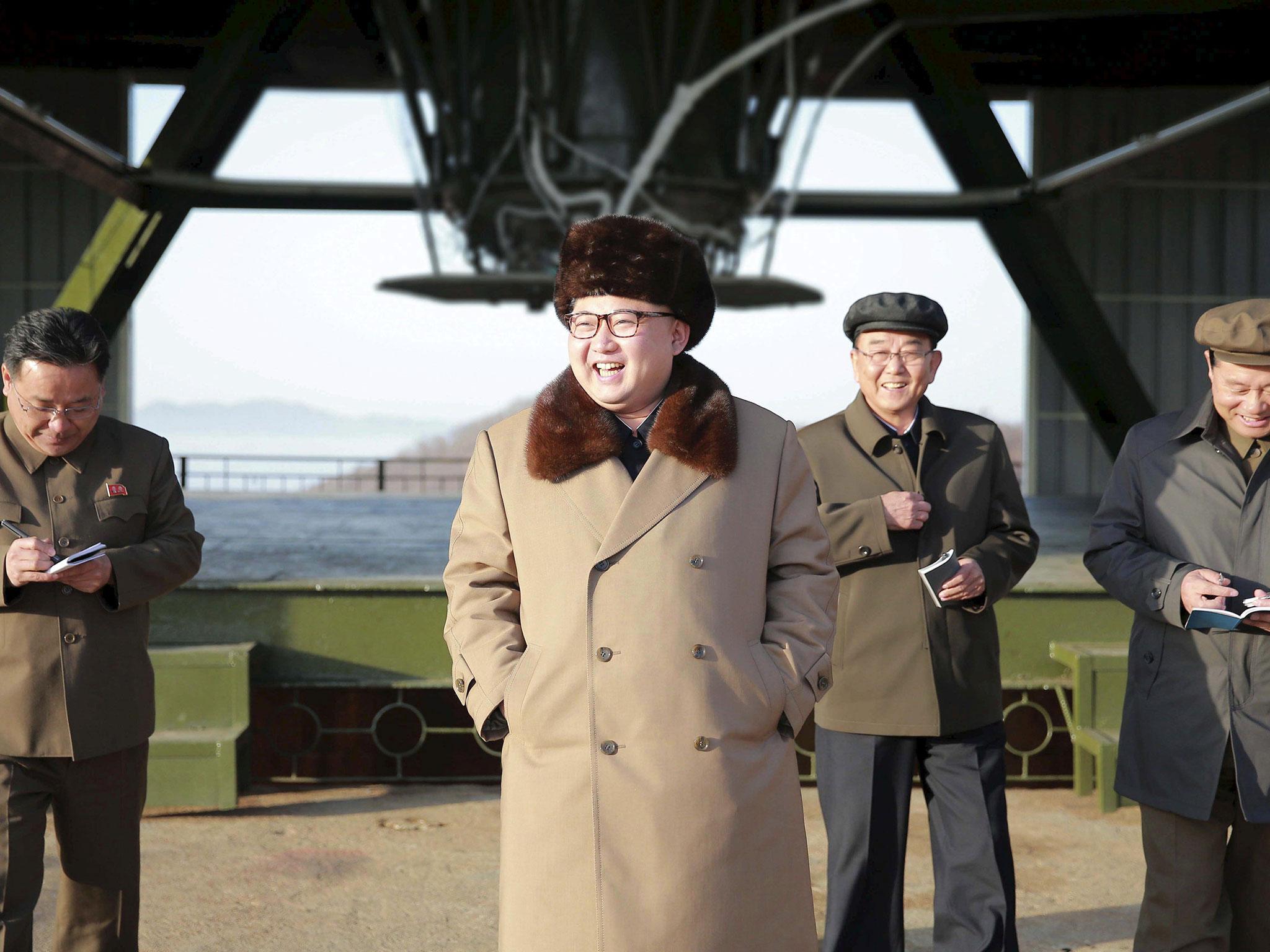North Korea's claim to be close to inter-continental missile test launch is plausible, warn experts
Once fully developed a North Korean ICBM could threaten the continental United States

Your support helps us to tell the story
From reproductive rights to climate change to Big Tech, The Independent is on the ground when the story is developing. Whether it's investigating the financials of Elon Musk's pro-Trump PAC or producing our latest documentary, 'The A Word', which shines a light on the American women fighting for reproductive rights, we know how important it is to parse out the facts from the messaging.
At such a critical moment in US history, we need reporters on the ground. Your donation allows us to keep sending journalists to speak to both sides of the story.
The Independent is trusted by Americans across the entire political spectrum. And unlike many other quality news outlets, we choose not to lock Americans out of our reporting and analysis with paywalls. We believe quality journalism should be available to everyone, paid for by those who can afford it.
Your support makes all the difference.North Korea has been working through 2016 on developing components for an intercontinental ballistic missile (ICBM), making the isolated nation's claim it was close to a test-launch plausible, international weapons experts said on Monday.
North Korea has been testing rocket engines and heat-shields for an ICBM while developing the technology to guide a missile after re-entry into the atmosphere following a lift-off, the experts said.
While Pyongyang is close to a test, it is likely to take some years to perfect the weapon.
Once fully developed, a North Korean ICBM could threaten the continental United States, which is around 9,000 km (5,500 miles) from the North. ICBMs have a minimum range of about 5,500km (3,400 miles), but some are designed to travel 10,000km (6,200 miles) or further.
North Korea's state media regularly threatens the US with a nuclear strike, but before 2016 Pyongyang had been assumed to be a long way from being capable of doing so.
"The bottom line is Pyongyang is much further along in their missile development than most people realise," said Melissa Hanham, a senior research associate at the US-based Middlebury Institute of International Studies at Monterey, California.
She said the North's test in April of a large liquid-fuel engine that could propel an ICBM was a major development.
"The liquid engine test was astounding," Ms Hanham said.
"For years, we knew that North Korea had a Soviet R-27 missile engine design. They re-engineered the design of that engine to double its propulsion."
North Korea has said it is capable of mounting a nuclear warhead on a ballistic missile but it claims to be able to miniaturise a nuclear device have never been independently verified.
The isolated nation has achieved this progress despite UN Security Council imposed sanctions for its nuclear tests and long-range rocket launches dating back to 2006. The sanctions ban arms trade and money flows that can fund the country's arms programme.
North Korea has enough uranium for six bombs a year and much of what it needs for its nuclear and missile programmes relies on Soviet-era design and technology. Labour is virtually free.
It can produce much of its missile parts domestically and invested heavily in its missile development infrastructure last year, funded by small arms sales and by taxing wealthy traders in its unofficial market economy.
Throughout the year, North Korean state media showed images of numerous missile component tests, some of which revealed close-up details of engines and heat shields designed to protect a rocket upon re-entry into the earth's atmosphere.
The propaganda offensive may have revealed some military secrets, but it may have also been a bid to silence outside analysts, many of whom had remained sceptical of the North's missile programme.
"They're answering the public criticisms of US experts," said Joshua Pollack, editor of the US-based Nonproliferation Review. "A lot of people had questioned whether they had a working ICBM-class heat shield."
"So they showed us."
Despite the research, Pyongyang has experienced considerable difficulties getting its intermediate-range Musudan missile, designed to fly about 3,000km (1,860 miles), off the ground. It succeeded just once in eight attempted launches last year.
North Korea has fired long-range rockets in the past, but has characterised those launches as peaceful and designed to put an object into space.
Still, the South Korean defence ministry believes the three-stage Kwangmyongsong rocket used by Pyongyang to put a satellite in space last February already has a potential range of 12,000km (7,457 miles), if it were re-engineered.
Doing so would require mastering safer "cold-launch" technology, and perfecting the ability of a rocket to re-enter the earth's atmosphere without breaking up.
"North Korea is working hard to develop cold-launch technology and atmospheric re-entry but South Korea and the U.S. will have to assess further exactly which level of development they have reached," South Korean defence ministry official Roh Jae-cheon told a briefing on Monday.
North Korea began stepping up its missile development in March 2016, Roh said, but added that there were no "unusual signs" related to test preparations, according to the South Korean military.
That same month, Kim Jong Un was photographed looking at a small, ball-like object that North Korean state news agency KCNA said was a miniaturised nuclear warhead - the device North Korea would need to fulfil its ICBM threat.
"2016 marked the year North Korea truly ramped up their WMD (Weapons of Mass Destruction) programme," Hanham at the Middlebury Institute of International Studies at Monterey said.
"I think we're going to see a [ICBM] flight test in 2017".
Reuters
Join our commenting forum
Join thought-provoking conversations, follow other Independent readers and see their replies
Comments